دوره آموزشی AIOps Professional
توضیحات
دوره آموزشی AIOps Professional
مدت دوره : 40 ساعت
سرفصل دوره:
- Overview of AIOps
- Benefits of Artificial Intelligence for IT Operations (AIOps(
- Artificial Intelligence for IT Operations (AIOps) Overview
- Benefits of AIOps
- Use Case: Evaluating the Benefits of AIOps
- Implications of AIOps for Business
- Implications of AIOps for Business
- Use Case: Implications of AIOps for Business
- Key Capabilities of Artificial Intelligence for IT Operations (AIOps)
- Key Capabilities of AIOps
- Use Case: Understanding Key Capabilities of AIOps
- Key Dimensions of IT Operations Monitoring
- IT Operations Monitoring: Overview and Relevance
- Understanding Key Dimensions of IT Operations Monitoring
- Key Dimensions of IT Operations Monitoring and AIOps
- Use Case: Understanding Key Dimensions of IT Operations Monitoring
- AIOps Deployment Types & storages
- AIops Industry Use cases
- AIOps Vs DevOps Vs MLOps Life cycle
- AIOps Challenges
- AIOps Popular Solutions
- ps Best Practices
- AIOps supporting DevOps & SRE
- Introduction to Prometheus
- Overview of Prometheus
- Brief history and purpose
- Key features and architecture
- Basic Installation and Configuration
- Quick setup guide
- Overview of configuration files and settings
- Understanding Metrics and Data Model
- Introduction to Prometheus metrics
- Data types and structure
- Q&A Session
- Overview of Prometheus
- Basic Monitoring with Prometheus
- Instrumentation and Metrics Collection
- How to add Prometheus metrics to an application
- Best practices for metric collection
- Introduction to Prometheus Query Language (PromQL)
- Basic syntax and queries
- Creating simple alerts
- Hands-On Exercise
- Quick setup of basic monitoring for a demo application
- Instrumentation and Metrics Collection
- Introduction to Grafana and Dashboard Creation
- Overview of Grafana
- Key features and integration with Prometheus
- Setting up Grafana
- Connecting Grafana to Prometheus
- Creating Basic Dashboards in Grafana
- Introduction to dashboard creation and configuration
- Overview of visualization type
- Hands-On Exercise
- Participants create a basic dashboard for the demo application
- Overview of Grafana
- Advanced Features and AIOps Integration
- Advanced Dashboard Techniques in Grafana
- Dynamic dashboards with variables
- Setting up basic alerts in Grafana
- Integrating Prometheus and Grafana with AIOps
- How these tools fit into an AIOps strategy
- Brief on AIOps concepts relevant to monitoring and observ ability
- Wrap-Up and Q&A
- Recap of key concepts
- Open floor for questions and discussion on real-world applications
- Advanced Dashboard Techniques in Grafana
Data Collection and Monitoring Tools
Log management: ELK Stack (Elasticsearch, Logstash, Kibana)
- Introduction to the ELK Stack
- Overview of ELK Stack
- Introduction to Elasticsearch, Logstash, and Kibana
- Role of ELK in AIOps
- Basic architecture and flow of data within the ELK Stack
- Introduction to Elasticsearch
- Understanding Elasticsearch basics: Indexes, Documents, and Nodes
- Basic Elasticsearch operations: CRUD (Create, Read, Update, Delete)
- Q&A Session
- Address initial queries and clarifications
- Overview of ELK Stack
- Deep Dive into Logstash and Data Ingestion
- Understanding Logstash
- Logstash fundamentals: Input, Filter, and Output plugins
- Configuring Logstash for data ingestion
- Hands-On Exercise: Setting Up Logstash
- Walkthrough of setting up a basic Logstash pipeline
- Understanding Logstash
Ingesting sample data into ElasticSearch
- Kibana for Data Visualization and Analysis
- Introduction to Kibana
- Kibana Dashboard, Visualization, and Discover features
- Connecting Kibana to Elasticsearch
- Hands-On Exercise: Creating Visualizations and Dashboards
- Participants create basic visualizations and dashboards using the inges ted data
- Exploration of Kibana’s features relevant to AIOps
- Introduction to Kibana
- ELK Stack in AIOps and Advanced Topics
- ELK Stack in the Context of AIOps
- Integrating ELK with AIOps workflows
- Real-world use cases of ELK in AIOps (e.g., anomaly detection, performance monitoring)
- Advanced ELK Features
- Brief on advanced Elasticsearch queries
- Overview of X-Pack features (security, alerting, machine learning)
- Wrap-Up and Q&A
- Recap of key points
- Open Q&A session to discuss practical applications and address any remaining questions
- ELK Stack in the Context of AIOps
- Introduction to Apache Kafka
- Introduction to Kibana
- What is Apache Kafka and why it’s important in AIOps
- Kafka’s architecture and core components (Brokers, Topics, Producers, Consumers)
- Kafka Installation and Basic Configuration
- Setting up a basic Kafka environment
- Overview of Kafka configuration files
- Introduction to Kibana
o Kafka Producers and Consumers
- Understanding Producers and Consumers
- Writing basic producers and consumers
o Q&A Session
- Address initial queries and clarifications
· Kafka in Depth – Topics, Partitions, and Replication
o Deep Dive into Kafka Topics and Partitions
- Creating and managing Topics
- Understanding Partitions for scalability and reliability
o Kafka Replication and Fault Tolerance
- Concept of replication for high availability
- Leader and follower partitions
· Kafka Streams and Kafka Connect
o Introduction to Kafka Streams
- Understanding stream processing in Kafka
- Basics of Kafka Streams API
o Kafka Connect for Integration
- Overview of Kafka Connect
- Setting up connectors for data import/export
· Kafka in AIOps and Practical Exercise
o Using Kafka in an AIOps Context
- Role of Kafka in event-driven architectures for AIOps
- Real-world use cases: Log aggregation, metrics collection, real -time analytics
o Hands-On Exercise: Setting Up a Kafka Pipeline
- Building a simple pipeline for data ingestion a nd processing
- Monitoring and managing Kafka performance
o Wrap-Up and Q&A Session
- Recap of key concepts and best practices
- Open floor for final questions and discussions
Data Collection and Monitoring Tools
Machine learning libraries: TensorFlow
- Introduction to TensorFlow and Machine Learning Basics
- Overview of TensorFlow
- Introduction to TensorFlow and its relevance in AIOps
- Core features and capabilities of TensorFlow
- Machine Learning Fundamentals
- Brief overview of machine learning concepts
- How TensorFlow supports machine learning operations
- Setting Up TensorFlow
- Installation and setup of TensorFlow
- Introduction to TensorFlow’s programming model
- Q&A Session
- Address initial queries and clarifications
- Overview of TensorFlow
- TensorFlow Basics – Operations, Graphs, and Sessions
- TensorFlow Core Concepts
- Understanding Tensors, Operations, Graphs, and Sessions
- Building simple computation graphs
- Hands-On Exercise: Basic TensorFlow Operations
- Creating and executing a simple TensorFlow program
- TensorFlow Core Concepts
Introduction to TensorFlow data types and operations
- Building Machine Learning Models with TensorFlow
- Introduction to Neural Networks in TensorFlow
- Basic concepts of neural networks
- Building a simple neural network in TensorFlow
- Practical Exercise: Building a Basic ML Model
- Step-by-step construction of a machine learning model for a simple problem (e.g., regression or classification)
- TensorFlow in AIOps and Advanced Topics
- TensorFlow in the Context of AIOps
- Discussing the role of TensorFlow in AIOps (e.g., anomaly detection, predictive maintenance)
- Real-world examples of TensorFlow applications in AIOps
- Advanced TensorFlow Features
- Overview of advanced features like TensorFlow Extended (TFX), Keras for deep learning, and distributed training
- Wrap-Up and Q&A Session
- Recap of key concepts and best practices
- Open floor for final questions and discussions on practical TensorFlow applications in AIOps
- TensorFlow in the Context of AIOps
- Introduction to Neural Networks in TensorFlow
Data analysis tools: Jupyter Notebook
- Introduction to Jupyter Notebooks
- Overview of Jupyter Notebooks
- Introduction to Jupyter Notebooks and their importance in data analysis
- Key features and benefits in the context of AIOps
- Setting up Jupyter Notebooks
- Installation and basic setup
- Navigating the Jupyter Notebook interface
- Basic Operations in Jupyter Notebook
- reating and managing notebooks
- Overview of Markdown, code cells, and kernel management
- Overview of Jupyter Notebooks
o Q&A Session
- Addressing initial queries and clarifications
· Data Analysis Basics in Jupyter Notebook
o Data Import and Manipulation
- Importing data from various sources (CSV, databases)
- Basic data manipulation using Pandas
o Hands-On Exercise: Working with Data
- Participants practice importing and manipulating a sample dataset
· Advanced Data Analysis and Visualization
o Advanced Data Analysis Techniques
- Exploring more complex data manipulation and transformation
- Introduction to time series analysis relevant to AIOps
o Data Visualization in Jupyter
- Using Matplotlib and Seaborn for data visualization
- Creating plots and charts relevant to AIOps data (e.g., performance metric s)
· Jupyter Notebooks in AIOps Context and Best Practices
o Applying Jupyter Notebooks in AIOps
- Case studies or examples of Jupyter Notebooks used in AIOps scenarios
- Integrating Jupyter Notebooks with other AIOps tools and platforms
o Best Practices and Advanced Features
- Tips for effective use of Jupyter Notebooks
- Overview of advanced features like JupyterLab, extensions
o Wrap-Up and Q&A Session
- cap of key concepts and functionalities
- Open floor for final questions and in-depth discussions
Analysis and Automation
Configuration management tools: Ansible
- Introduction to Ansible and Configuration Management
- Overview of Ansible
- Introduction to Ansible and its role in AIOps
- Key features and advantages of using Ansible for configuration management
- Ansible Architecture and Components
- Understanding Ansible architecture: Playbooks, Roles, Tasks, Modules, Inventory
- YAML syntax basics
- Setting Up Ansible
- Installation and basic setup of Ansible
- Setting up an inventory file
- Q&A Session
- Addressing initial queries and clarifications
- Overview of Ansible
- Basic Playbooks and Ad-hoc Commands
- Writing Your First Ansible Playbook
- Creating a simple playbook
- Defining tasks and running the playbook
- Ansible Ad-hoc Commands
- Introduction to ad-hoc commands in Ansible
- Practical examples of common ad-hoc commands
- Writing Your First Ansible Playbook
- Advanced Ansible Features
- Variables, Templates, and Roles
- Using variables and templates for dynamic configurations
- Organizing playbooks with roles
- Error Handling and Debugging
- Best practices for error handling in Ansible playbooks
- Using Ansible’s debugging tools
- Variables, Templates, and Roles
· Ansible in AIOps and Hands-On Exercise
o Applying Ansible in an AIOps Context
- Case studies or examples of Ansible used in AIOps scenarios
- Integration of Ansible with monitoring and alerting tools
o Hands-On Exercise: Building an AIOps Pipeline
- Participants work on creating a basic pipeline using Ansible
- Automating a simple operational task relevant to AIOps
o Wrap-Up and Q&A Session
- Recap of key concepts and functionalities
- Open floor for final questions and in-depth discussions
Infrastructure-as-code software tool: Terraform
· Introduction to Terraform and Infrastructure as Code
o Overview of Terraform
- Introduction to Terraform and its role in infrastructure automation
- Key features and benefits of using Terraform in AIOps
o Terraform Basics
- Understanding Terraform’s syntax and structure
- Core concepts: Providers, Resources, Variables, State
o Setting Up Terraform
- Installing Terraform
- Basic setup and configuration
o Q&A Session
- Addressing initial queries and clarifications
· Writing Terraform Configuration
o Creating Your First Terraform Configuration
- Writing a basic Terraform configuration file
- Managing infrastructure as code
o Understanding Terraform Workflow
- The Terraform workflow: init, plan, apply, destroy
- Hands-on demo of managing a simple infrastructure
· Advanced Terraform Concepts
o Modules and Remote State
- Using modules to organize and reuse code
- Managing state in complex environments
o Dynamic Infrastructure with Terraform
- Dynamic configurations with loops and conditionals
- Integrating with cloud providers (AWS, Azure, GCP)
· Terraform in AIOps and Practical Exercise
o Terraform in an AIOps Context
- Real-world use cases of Terraform in AIOps
- Automating and maintaining AIOps infrastructure with Terraform
o Hands-On Exercise: Implementing an AIOps Scenario
- Participants implement a small-scale infrastructure setup relevant to AIOps
- Practicing Terraform commands and configurations
o Wrap-Up and Q&A Session
- Recap of key concepts and best practices
- Open floor for final questions and discussions on practical applications
CI/CD and Automation
Continuous integration tools: Jenkins
· Introduction to Jenkins and Continuous Integration
- Overview of Jenkins
- Introduction to Jenkins and its importance in CI/CD pipelines
- The role of Jenkins in AIOps
o Jenkins Architecture and Key Concepts
- Understanding Jenkins architecture: master, agents, plugins
- Core concepts: Jobs, Builds, Plugins, Pipelines
o Setting Up Jenkins
- Installing and configuring Jenkins
- Navigating the Jenkins interface
o Q&A Session
- Addressing initial queries and clarifications
· Building Jobs and Basic Pipelines in Jenkins
o Creating Your First Jenkins Job
- Setting up a freestyle project
- Configuring source code management (SCM), build triggers, and build steps
o Introduction to Jenkins Pipelines
- Creating a basic pipeline using Jenkinsfile
- Pipeline syntax and scripted declarative pipelines
· Advanced Jenkins Usage and Integration
- Automated Testing and Notifications
- Integrating automated testing into Jenkins pipelines
- Configuring build notifications (e.g., email, Slack)
- Integrating Jenkins with Other Tools
- Connecting Jenkins with version control systems (like Git)
- Using Jenkins with containerization tools (like Docker)
· Jenkins in AIOps and Practical Exercise
o Jenkins in the Context of AIOps
- Discussing the role of Jenkins in automated operations
- Use cases of Jenkins in monitoring, alerting, and auto -remediation
o Hands-On Exercise: Implementing a CI/CD Pipeline
- Participants create a simple CI/CD pipeline relevant to AIOps
- Emphasizing on automated deployment and testing
o Wrap-Up and Q&A Session
- Recap of key concepts and functionalities
- Open floor for final questions and discussions
Runbook Automation Platform: Rundeck
· Introduction to Rundeck and Runbook Automation
o Overview of Rundeck
- Introduction to Rundeck and its significance in AIOps
- Understanding the role of runbook automation in IT operations
o Rundeck Architecture and Key Features
- Core components: Jobs, Nodes, Projects, Commands
- Overview of Rundeck’s UI and basic navigation
o Setting Up Rundeck
- Installation and basic configuration
- Setting up projects and access controls
o Q&A Session
- Addressing initial queries and clarifications
· Creating and Managing Jobs in Rundeck
o Defining and Executing Jobs
- Creating your first job in Rundeck
- Configuring job workflows, options, and scheduling
o Advanced Job Features
- Using job plugins for extended functionality
- Handling job outputs and logs
· Integrating Rundeck with Other Tools and Services
- Rundeck Integrations
- Integrating with version control systems (e.g., Git)
- Connecting Rundeck with monitoring tools (e.g., Nagios, Splunk)
- API and CLI Usage
- Utilizing Rundeck’s API for automation
- Command-line interface for Rundeck management
· Rundeck in AIOps and Practical Exercise
o Applying Rundeck in an AIOps Context
- Case studies or examples of Rundeck used in AIOps scenarios
- Automating routine operations and incident response
o Hands-On Exercise: Implementing a Runbook Automation Scenario
- Participants implement a basic runbook automation task relevant to AIOps
- Emphasizing on automated problem resolution and reporting
o Wrap-Up and Q&A Session
- Recap of key concepts and functionalities
- Open floor for final questions and discussions on practical applications
نظرات (0)
اولین نفری باشید که دیدگاهی را ارسال می کنید برای “دوره آموزشی AIOps Professional” لغو پاسخ
محصولات مشابه
0
رایگان
0
رایگان
0
رایگان
0
رایگان
0
رایگان
0
رایگان

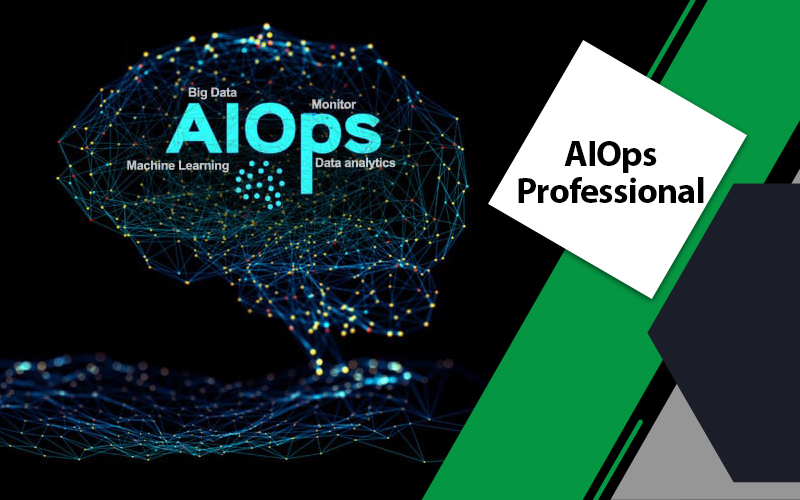
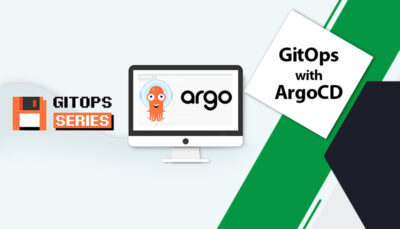
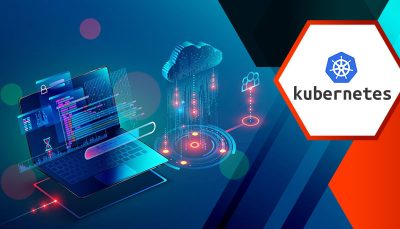
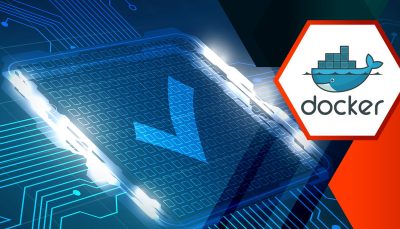
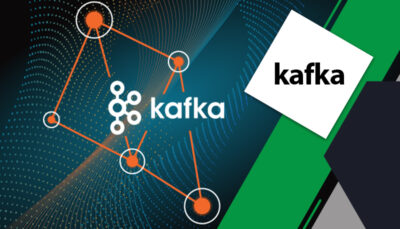

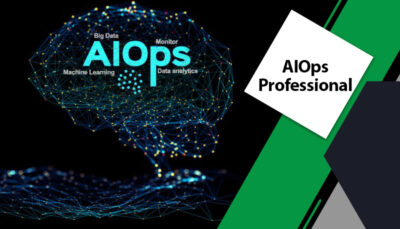
دیدگاهها
هیچ دیدگاهی برای این محصول نوشته نشده است.